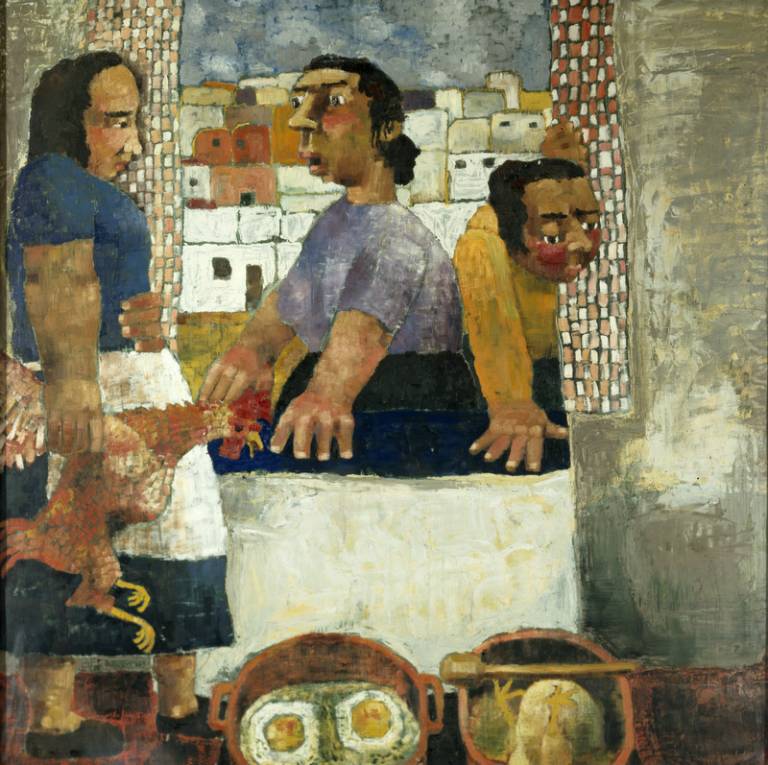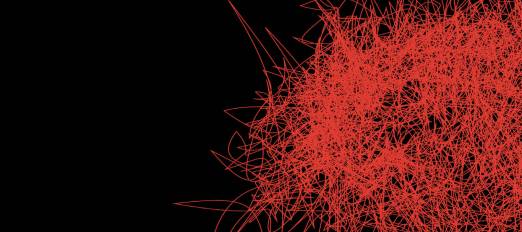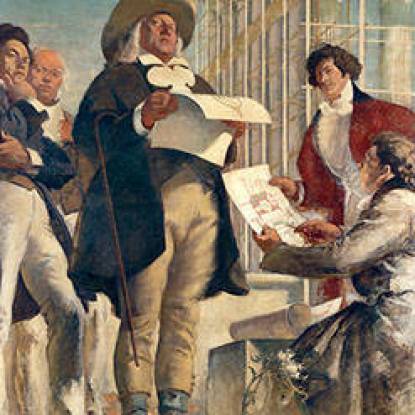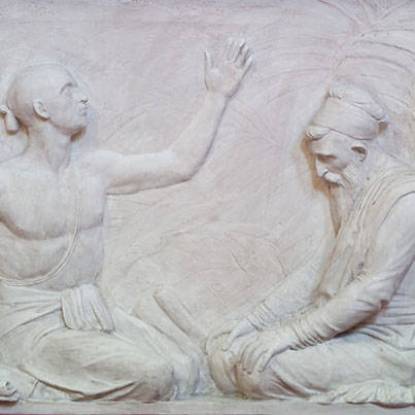Under Milk Wood
This work is no longer on public display after the staff members room, the Housman Room, was redecorated in 2018. It can be viewed by appointment only).

This prize-winning Slade painting shows three strong women gossiping in a Portuguese kitchen, anticipating the dominant female characters in the artist's later work.
Rego at the Slade
Paula Rego was born in Lisbon and studied at the Slade between 1952 and 1956. She won first prize in the Summer Composition Competition of 1954 with her interpretation of Under Milkwood by Dylan Thomas (1914-53), first broadcast as a radio play in the same year. Rego has later spoken of the importance of the unrestrictive atmosphere at the Slade, in particular the Summer Composition Competitions in encouraging the imaginative side of her work: ‘I spent most of my time doing these pictures out of my head, which was encouraged. Not a restricting art school at all.’ However, despite the positive effect of the Summer Composition work, Rego also felt restricted by the regime of conventional easel painting; this took her away from a child-like approach to art which was only revived after seeing an exhibition of the work of Jean Dubuffet (1901–85). (i)
Dylan Thomas in Portugal
The setting of Rego’s Under Milkwood is a Portuguese kitchen, far removed from Dylan Thomas’s Wales, as the artist explains:
"It is set in a fishing village in Wales that was very much like the village where we had a small quinta, a traditional Portuguese farm house. So instead of doing the village in Wales, where I’d never been, I set it in Portugal. There is the chicken, which has been killed for dinner, three women and fried eggs. It is as simple as that. But this is Portuguese earthenware, not Welsh. I couldn’t imagine what a Welsh village was like. It’s all made up." (ii)
The role of childhood memory has always been important in Rego’s work, and she has spoken about the importance of her grandmother’s kitchen as a child:
"I loved my grandmother’s house in Lisbon. It was wonderful because I was allowed to go to the kitchen you see ... I went to the kitchen and there were dead chickens and cooking and people ironing and just everything. It was the centre of activity, which I liked very much." (iii)
Drawing on this memory Rego created an imaginative picture space with its own rules and conventions, there is no use of conventional perspective, and the forms are arranged vertically in the picture plane. The space is dominated by gossiping female characters whose monumentality and strength anticipate the dominant female protagonists of her later work.
Paula Rego
Rego married fellow Slade student Victor Willing (1928–88) in 1959, and between 1957 and 1975 she divided her time between London and Portugal, settling in London in 1976. Her first solo show was in Lisbon in 1965, and she exhibited regularly in Lisbon and London in the 1970s and 1980s. In 1988 she had a retrospective at the Gulbenkian Foundation in Lisbon and the Serpentine Gallery. She was appointed the first Associate Artist at the National Gallery in 1990 and the National Gallery held an exhibition of her work in 1991–2. A major retrospective of her work was held at the National Museum of Fine Art in Madrid in 2007. In 2009 a museum dedicated to Rego’s work and named ‘The House of Stories: Paula Rego’ was opened in the Portuguese town of Cascais and in 2010 she was made Dame of the British Empire in the queen’s Birthday Honours. In 2012 the new Gulbenkian Museum in Paris will show a retrospective of her work.
i) Paula Rego in conversation with John McEwan, Paula Rego, exhib. cat., London: Serpentine Gallery, 1988, p. 45.
ii) Quoted in Paula Rego, exhib. cat., Madrid: Museo Nacional Centro de Arte Reina Sofia, 2007, p. 248.
 Close
Close




